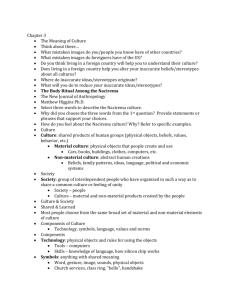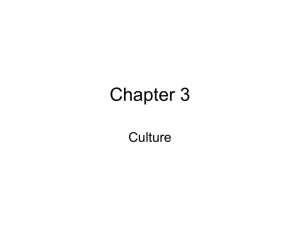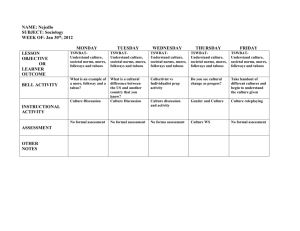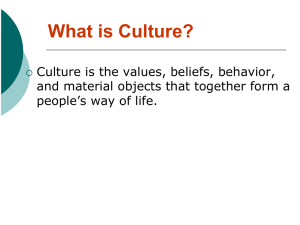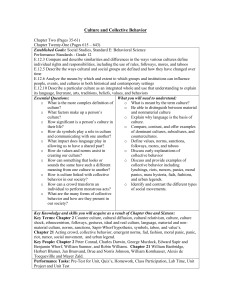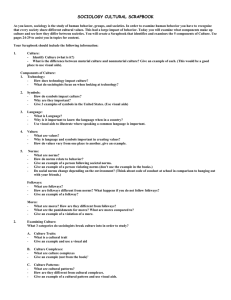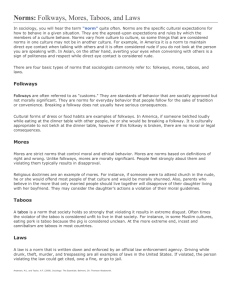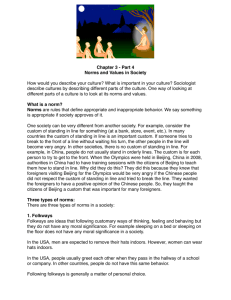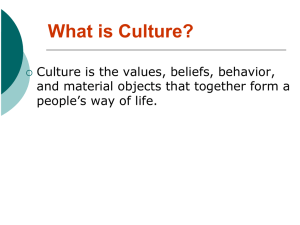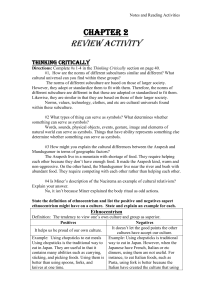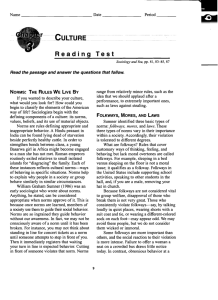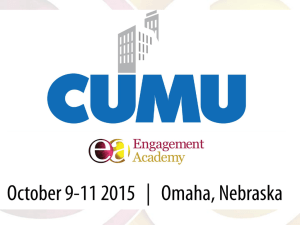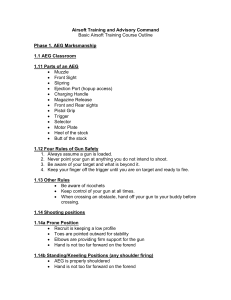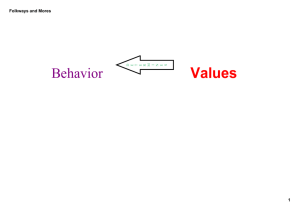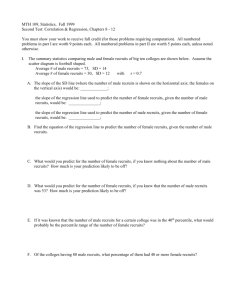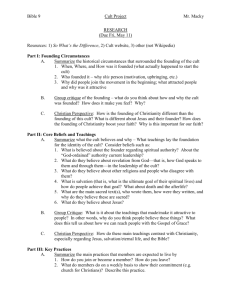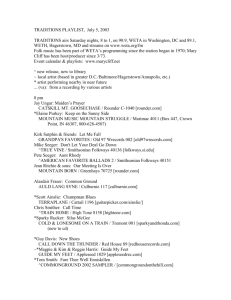answer key
advertisement
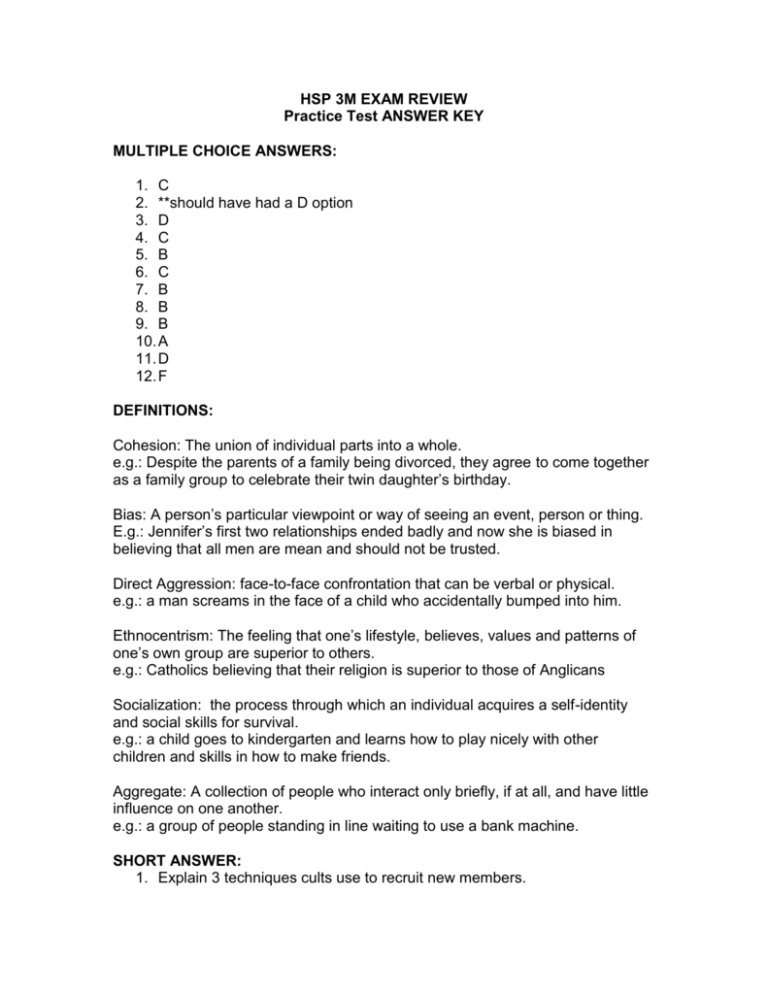
HSP 3M EXAM REVIEW Practice Test ANSWER KEY MULTIPLE CHOICE ANSWERS: 1. C 2. **should have had a D option 3. D 4. C 5. B 6. C 7. B 8. B 9. B 10. A 11. D 12. F DEFINITIONS: Cohesion: The union of individual parts into a whole. e.g.: Despite the parents of a family being divorced, they agree to come together as a family group to celebrate their twin daughter’s birthday. Bias: A person’s particular viewpoint or way of seeing an event, person or thing. E.g.: Jennifer’s first two relationships ended badly and now she is biased in believing that all men are mean and should not be trusted. Direct Aggression: face-to-face confrontation that can be verbal or physical. e.g.: a man screams in the face of a child who accidentally bumped into him. Ethnocentrism: The feeling that one’s lifestyle, believes, values and patterns of one’s own group are superior to others. e.g.: Catholics believing that their religion is superior to those of Anglicans Socialization: the process through which an individual acquires a self-identity and social skills for survival. e.g.: a child goes to kindergarten and learns how to play nicely with other children and skills in how to make friends. Aggregate: A collection of people who interact only briefly, if at all, and have little influence on one another. e.g.: a group of people standing in line waiting to use a bank machine. SHORT ANSWER: 1. Explain 3 techniques cults use to recruit new members. Love Bombing: recruiters are warm and loving toward potential prospects. They make a new recruit feel special and important. Exploitation of personal weakness: Recruiters get to know a new prospect and find out their weaknesses. Then they show the recruit how they can become a better person if they join the cult. Isolation and no privacy: new recruits are kept away from friends and family. They are constantly surrounded by cult members. Food and Sleep Deprivation: recruits are kept busy with activities that leave them with little time to eat and sleep. The resulting fatigue makes them more open to suggestion and less likely to think critically. Guilt, Public Confession and group approval: If recruits express doubts about the cult, they are made to feel selfish or arrogant. Public confessions are meant to destroy the self-esteem of the recruit. Group approval encourages conformity. 2. How to anthropologists explain thrill-seeking behaviour? Anthropologists believe that our brains have evolved to be hardwired to seek out thrilling experiences because our early ancestors were constantly on the alert for threats from their environment (animal attacks, wars, etc.) We no longer face these threats, but parts of the brain may be wired to anticipate them. Thrillseeking activities fuel this part of the brain. 3. Explain the difference between norms and sanctions. Norms involve both folkways and mores. Mores are highly regarded moral views on behaviour that are almost never broken, and folkways are norms that involve everyday behaviours, habits or practices such as manners, interactions or personal appearance. Sanctions are the formal or informal penalties/rewards given to ensure conformity to norms. 4. Explain the results of the Stanford Prison Experiment. What important information did the experiment reveal? The Stanford Prison experiment revealed that when ordinary people are placed in positions of authority they may be more likely to abuse their power and authority. People are also more likely to be obedient to those in authority regardless of their qualifications for the position. The experiment demonstrated that situational factors can have a powerful effect on human behaviour. Experiment Analysis Answers: Purpose: to see if ordinary people would commit horrible acts simply because they were being obedient and following orders. Hypothesis: For how long will someone continue to give shocks to another person if they are told to do so, even if they thought they could be seriously hurt? Observations: 65% of participants were willing to give maximum shocks despite feeling agitated and upset about it. They continued to listen to the instructions of the confederate. Conclusions: Milgram’s hypothesis was correct. The majority of participants continued to give shocks even though they believed that someone was being seriously hurt. 2. Was this experiment ethical? Why/Why not? **Personal opinion but you should back up your argument with evidence from the experiment. e.g. Yes the experiment was ethical because the participants were debriefed at the end. No, it was not ethical because it caused the participants great emotional distress. There was an element of deception involved because the participants were not told of the true nature of the tasks. 3. What were the control factors used in the experiment? - all shock buttons were labeled the same for each participant - all participants were recruited in the same manner and paid the same amount - the “learner” always pretended to have a heart condition - the same set of commands was used for every participant: 1. "Please continue." 2. "The experiment requires that you continue." 3. "It is absolutely essential that you continue." 4. "You have no other choice, you must go on."

